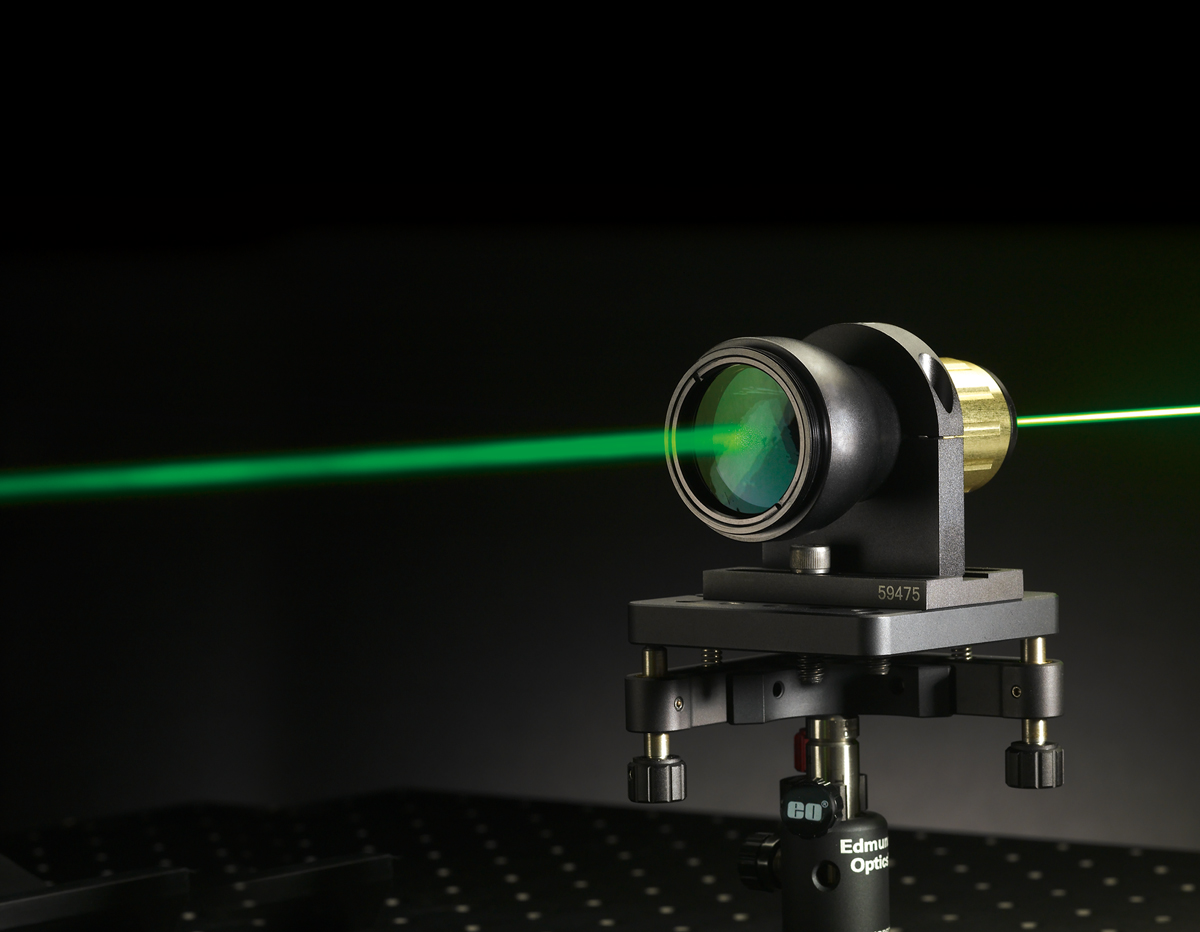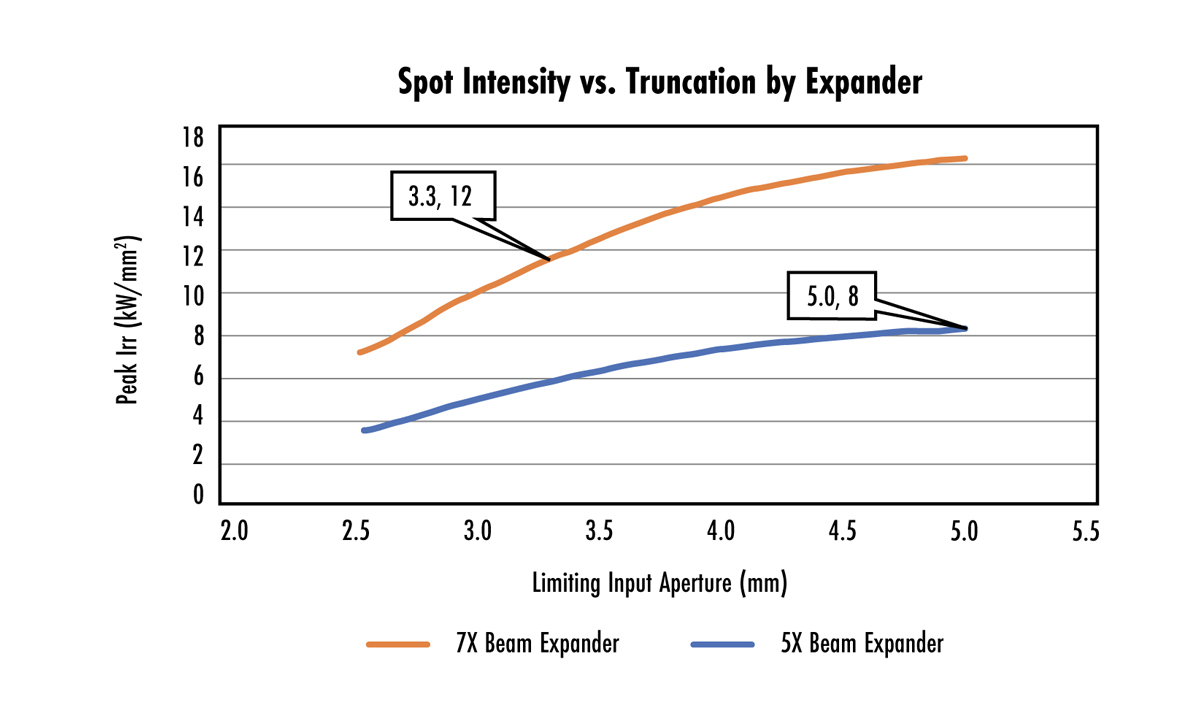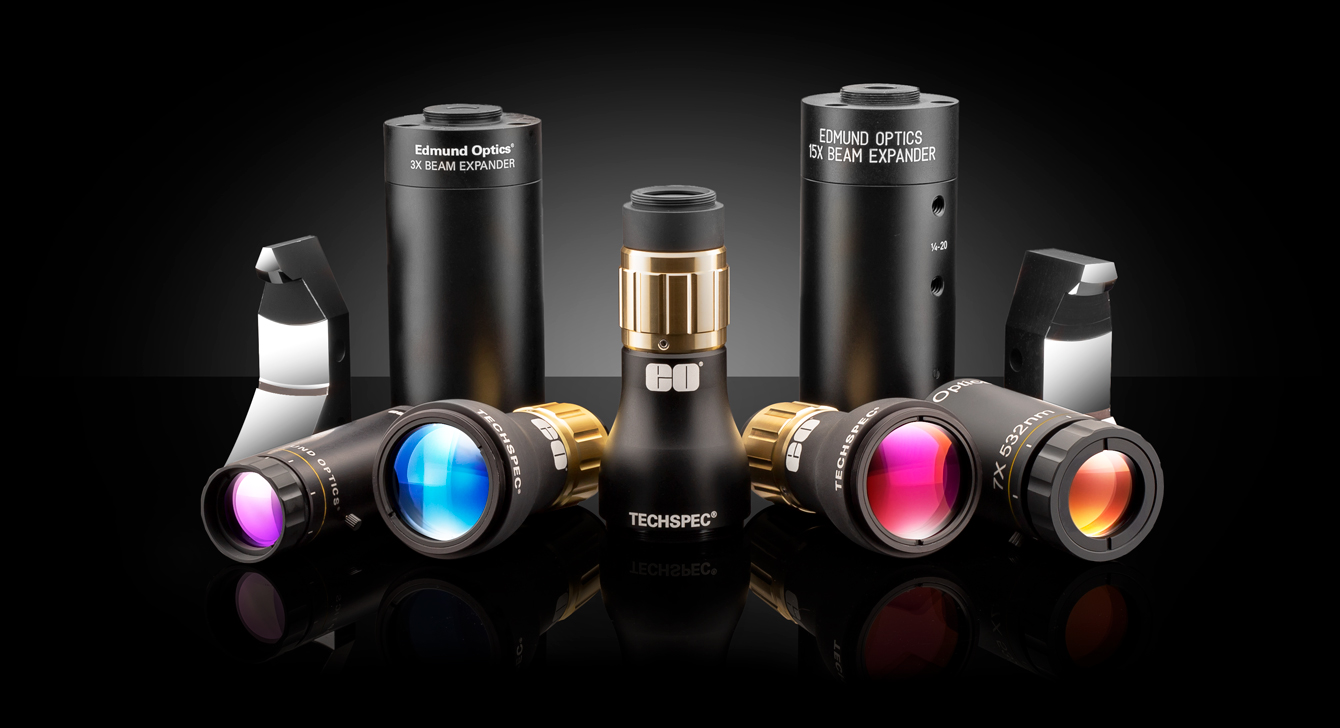The Unintuitive Balancing Act of Beam Expander Properties to Maximize Focused Spot Intensity
著者: Jay Small
For laser applications working with a focused beam, the goal is often to achieve a focused spot size with a power density high enough for the given process. A beam delivery system will include the initial laser, a collimator stage, and a final focusing element. Often, a beam expander is used to increase the beam into the focuser to reduce the spot size.
A common assumption is to require the clear aperture of the beam expander to subtend at least 2X the input beam diameter to avoid spoiling the laser beam quality, reducing laser power, and attaining a minimized spot size. While it is true this will produce a higher spot intensity than a smaller aperture ratio, often commercially available beam expanders of 5X or more would accept impractically small input beams if adhering to this rule.
In reality, one can achieve a higher beam intensity with a system configuration that slightly truncates the beam. With this approach, there are two competing factors affecting the final spot intensity. Expanding the beam diameter prior to focusing decreases the spot size and increases its intensity while clipping the beam increases the spot size and decreases its intensity. Perhaps unintuitively, the optimal tradeoff for producing the highest spot intensity is a clipped beam through a higher magnification expander.
This application note illustrates how choosing optical components that clip some of the laser power will achieve a spot intensity higher than one that passes >99% of the beam power. The intensities are analyzed using Ansys’ OpticsStudio Physical Optics Propagation (POP) for a range of clipping ratios.

Figure 1: Surprisingly, using a higher magnification beam expander that clips the edges of the beam may result in a higher intensity final spot size after being focused compared to a lower magnification expander with no clipping.
Example of Clipping the Beam to Maximize Power Density
Consider a system using a 100W continuous wave (CW) Nd:YAG laser at 532nm that requires a minimum working distance of 100mm and a focused spot peak intensity of 10 kW/mm². The laser has an output beam diameter of 2.5mm measured by the $1⁄e^2$ second-moment diameter. To simplify the analysis, we will take the beam quality factor as M² = 1, assuming that it is an ideal Gaussian beam. The shortest focal length allowed of 100mm will not produce the required spot intensity, only 0.35 kW/mm2.
We must, therefore, use a beam expander to enlarge the beam prior to the focuser. Two beam expander options are available from the Edmund Optics® Vega® family as possibilities, #39-738, a 5X expander, and #39-739, a 7X expander. Both have the same outer diameter and maintain similar price points. We see that the input clear aperture of 5.0mm for the 5X expander is 2X our beam diameter, but the resulting spot intensity is only 8.6 kW/mm2. Looking at the 7X, since the devices have the same exit aperture size, the higher magnification means the input clear aperture must be smaller—3.3mm—and will truncate our beam.
Let us examine the effect on our spot intensity of these two beam expanders as a function of aperture size in Figure 1. The peak intensity data is generated with OpticStudio POP analysis, which considers the clipping effect of increasing the focused spot size and associated power loss. For both cases, the input beam diameter is 2.5mm. Note that the plots start at a beam truncation ratio of 1 beam diameter, clipping a fairly substantial 13.5% of the laser power. What we see, however, is that the 7X beam expander achieves our required 10 kW/mm2 spot intensity before reaching its 3.3mm input aperture limit, while the 5X expander never reaches this value.

Figure 2: Peak intensity as a function of input clear aperture diameter, showing that clipping the beam going through the 7X expander achieves a higher power density than the 5X expander with no clipping.
For this example, the 7X expander clips 3% of the laser power, but the final spot intensity achieves our requirement. The clipped power of 3W may require a thermally managed aperture prior to the expander to prevent overheating, but this will not further alter the spot intensities.
Beam Expanders at Edmund Optics®

Edmund Optics® designs a wide variety of laser beam expanders. Available options include many coatings for different laser wavelengths, divergence adjustment, variable magnification, and even reflective designs. Whether you need small quantities of off-the-shelf available for immediate shipping or large volumes of custom beam expanders, we have solutions for your laser system.


























もしくは 現地オフィス一覧をご覧ください
クイック見積りツール
商品コードを入力して開始しましょう
Copyright 2023, エドモンド・オプティクス・ジャパン株式会社
[東京オフィス] 〒113-0021 東京都文京区本駒込2-29-24 パシフィックスクエア千石 4F
[秋田工場] 〒012-0801 秋田県湯沢市岩崎字壇ノ上3番地